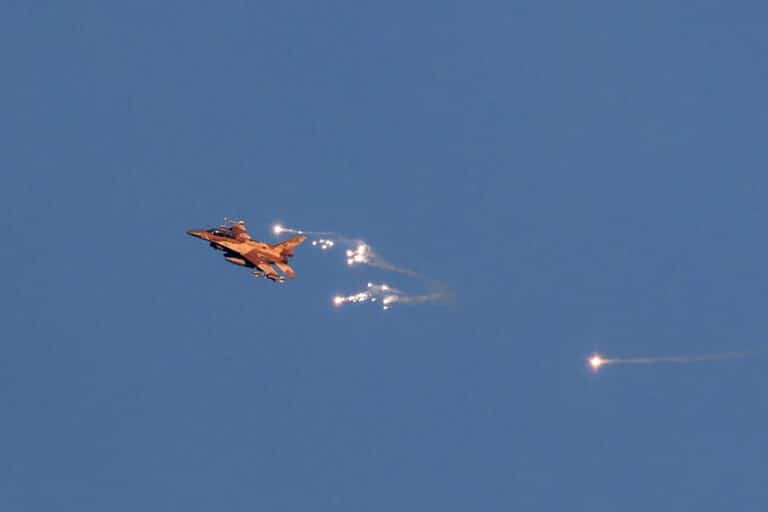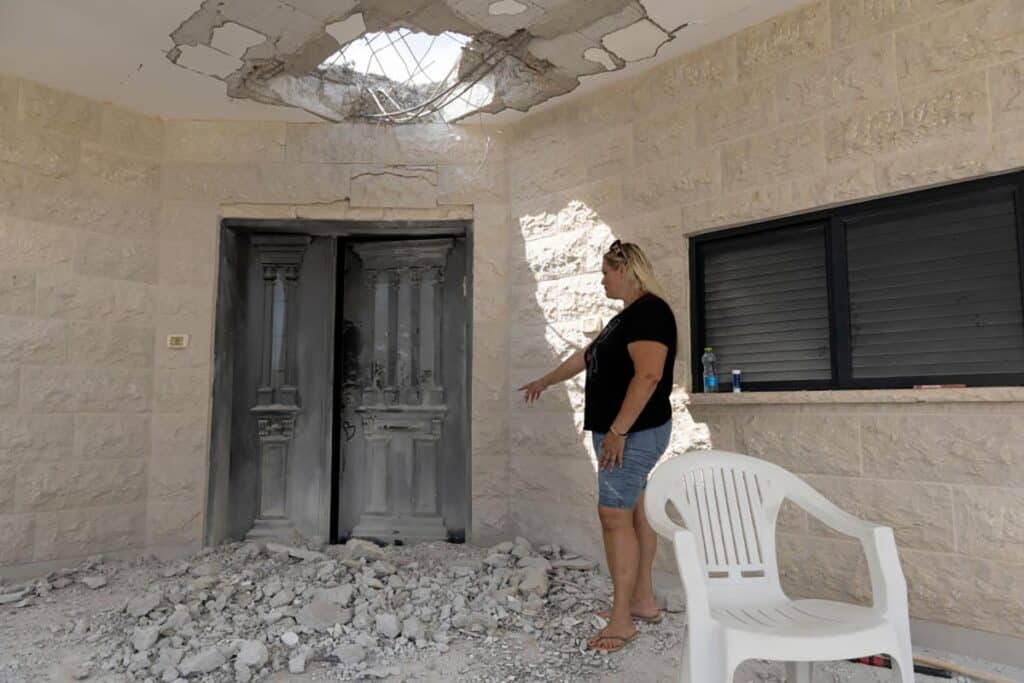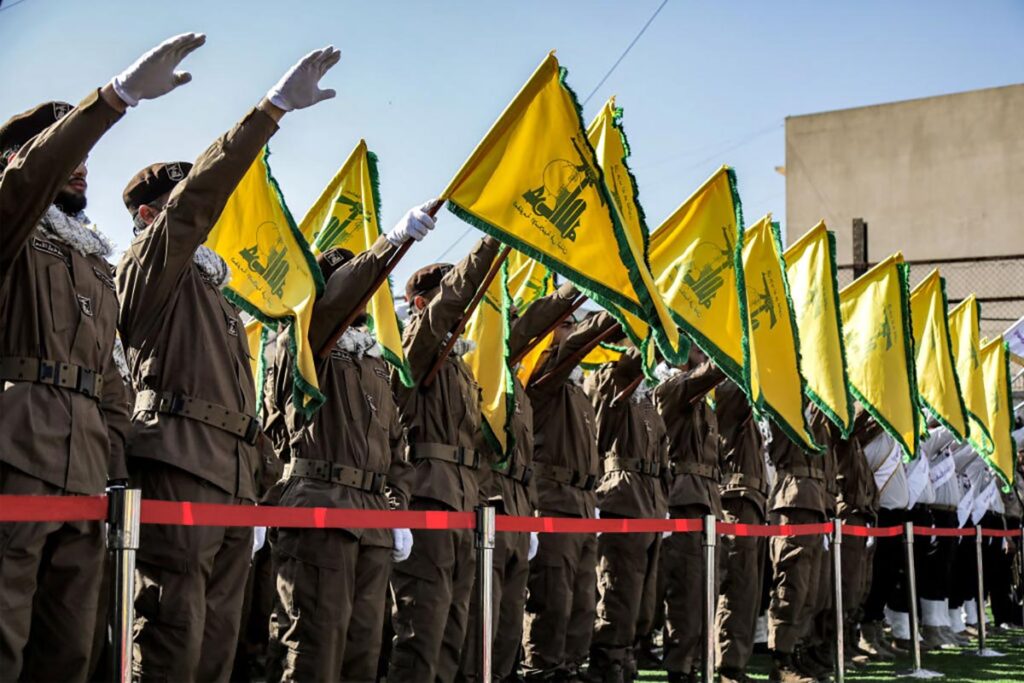
Israel announced early Sunday morning that it had launched preemptive strikes against hundreds of Hezbollah rocket launchers, thwarting a planned attack that intended to hit targets as far as the area around Tel Aviv.
Shortly after, Hezbollah launched over 200 rockets and about 20 drones toward northern Israel, insisting that it had hit every site it had wanted to target. Hezbollah added that this was only the “initial response” to the assassination of their top military commander in late July.
What happened, and what could happen next? Let’s Unpack it.
What happened?
On July 30, the IDF eliminated Fuad Shukr, Hezbollah’s top military commander, in an airstrike on Beirut. The assassination was carried out in response to a Hezbollah rocket attack in which 12 children were killed in Majdal Shams several days before.
In the weeks since, Hezbollah has repeatedly threatened a “significant” response, with reports varying about how far it intended to go with the planned attack. Some reports indicated the terrorist group would fire rockets and drones as far as central Israel, while others indicated Hezbollah would keep the attack limited to the north to avoid a larger conflict.
After weeks of waiting, the attack, or at least the first phase of it, came on Sunday morning. However, the IDF noticed Hezbollah’s preparations and launched preemptive strikes, taking out thousands of rocket launchers across southern Lebanon before Hezbollah could use them.
WATCH how the IAF acted precisely today to stop a large-scale terrorist attack from Hezbollah.
— Israel Defense Forces (@IDF) August 25, 2024
Our operation in Lebanon targeted the terrorist infrastructure Hezbollah planned to use against us, protecting Israeli families and homes. pic.twitter.com/2J3sqAnFWB
The strike Hezbollah wanted to carry out involved firing hundreds of rockets toward northern and central Israel. Instead, a few hundred rockets and less than two dozen drones were launched, reaching no further than Acre in northern Israel.
IDF Petty Officer 1st Class David Moshe Ben Shitrit was killed in the attack, with an initial investigation finding that he was hit by shrapnel from an interceptor targeting a Hezbollah drone over the naval ship he was on. Two other soldiers were wounded on the ship.
Several impacts caused by interception shrapnel were reported in Acre and other locations across northern Israel, damaging farms and apartment buildings. One person was lightly wounded by shrapnel in Acre.

Ben-Gurion Airport was temporarily closed, and the IDF’s Home Front Command issued directives for areas from Tel Aviv northward, restricting gatherings, work, and educational activities. The restrictions were lifted a few hours later.
IDF Spokesperson Daniel Hagari stressed that most of the rockets struck in the preemptive strike were aimed for northern Israel, while a number of the drones were aimed for central Israel. Hagari added that some of the targets hit were meant to be used in future attacks and not the attack planned for Sunday.
Hezbollah claims it successfully carried out its attack
Hezbollah insisted after that the IDF’s preemptive strikes had not affected the scale of the response.
The terrorist movement claimed that it launched over 320 rockets towards at least 11 military sites in northern Israel.
In contrast to its claims, nearly every impact reported in Israel on Sunday morning affected civilian, not military, sites, including homes and farms. The attack was carried out mostly with unguided rockets, which can fall anywhere within a relatively large general area.
Hezbollah Secretary-General Hassan Nasrallah claimed Sunday evening that his movement succeeded in launching drones toward a military intelligence base in Glilot, just north of Tel Aviv. The Hezbollah leader accused Israel of lying about the results of the attack.
Despite Nasrallah’s claims, no explosions or any other signs of an attack were reported in central Israel at any point throughout the day. The Glilot base is located near a large shopping center and several residential neighborhoods. The IDF stressed that no bases were hit in the attack, and local residents did not report anything out of the ordinary.
While he expressed confidence that the attack had succeeded, Nasrallah did add the caveat that Hezbollah would look into whether it actually hit the Glilot base, stressing that if the results of the attack were “not sufficient,” it “reserved the right” to attack again.
What happens next?
While the IDF seems to have thwarted the bulk of Hezbollah’s intended response to Shukr’s assassination, it remains unclear where the situation is headed.
In its public statements Sunday, Hezbollah stressed that the attack was only the “first phase” of its response, implying there would be more attacks. However, it has used similar wording in past threats without following up with further action.

Additionally, while Hezbollah may have completed its response, there are still other terrorist groups with “open checks” against Israel.
Less than a day after the assassination in Beirut in July, Hamas leader Ismail Haniyeh was assassinated while visiting Tehran, the capital of Iran. Since then, Iran has been threatening a harsh response, although there have been no clear signs of how or when such an attack will take place.
Many reports throughout the past month had indicated that an Iranian attack was likely to come soon after or in coordination with Hezbollah’s attack.
In that vein, the BBC reported on Sunday that a second wave of retaliatory attacks against Israel is still expected from “another country.” However, it didn’t specify which country was being referred to.
The Houthi terrorist group in Yemen has also threatened to launch more significant attacks against Israel after the IDF struck the port of Hodaydah in Yemen in response to a drone attack that killed one person in Tel Aviv in mid-July. The Houthis have been launching drones and missiles toward Israel and at ships throughout the Middle East for months.
Residents of northern Israel demand stronger action against Hezbollah
While Israeli officials welcomed the apparent successful thwarting of a large Hezbollah attack, residents of northern Israel expressed outrage that a preemptive strike only came once Tel Aviv was under threat.
Tens of thousands of northern Israeli residents have been evacuated from their homes since October, with no sign of when they’ll be able to return. Extensive damage has been caused to homes and businesses in the north amid the fighting between Israel and Hezbollah as thousands of drones and rockets have been launched toward the north in the past 10 months.
יובל, שביתה בעכו ספג פגיעה ישירה, ל-@RinoZror ו-@_Gitsis_: "אין לנו ממ"ד, נכנסנו 5 אנשים לארון הנעליים שמתחת למדרגות, ניסינו לסגור את הדלתות ושמענו בום" pic.twitter.com/DFPEWXMup3
— גלצ (@GLZRadio) August 25, 2024
Local authorities in northern Israel announced on Sunday that they would be “halting communications with all government officials until a complete solution is found for the residents and children of the northern border.”
The local leaders called for a solution that would restore security so that those evacuated from their homes could return safely, as well as for an economic plan to be formed to rehabilitate the north.
The local authorities referred to the preemptive strike cynically as “Operation Peace for Tel Aviv,” a reference to the First Lebanon War, which was originally called Operation Peace for Galilee. They argued that the fact that such a strike was only carried out once Tel Aviv was under threat showed that the country’s center was treated differently than the periphery.
“The prime minister, ministers, coalition members, government officials, and all government employees wherever they are – we haven’t interested you for ten and a half months, from now on you don’t interest us. Don’t call, don’t come, don’t send messages. We’ve managed on our own so far, we’ll manage on our own from now on as well,” said the local leaders.
Similar criticisms have been made for months. In July, after the IDF struck Yemen – over 1,000 miles from Israel – in an unprecedented response to the Houthi drone attack on Tel Aviv, residents of the north and the south noted that months of much larger scale attacks against them had not resulted in similar strikes.
Leaders of municipalities and regional councils in northern Israel called for the government and the IDF to strike Hezbollah more harshly, stressing that only stronger attacks would restore security in the north.


